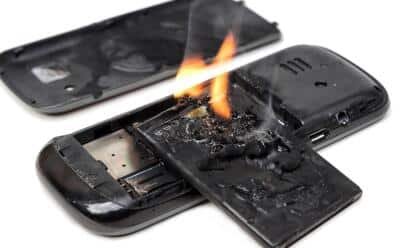What’s the Difference Between Gel Battery and Lithium Battery?
In today’s world, batteries are an essential part of our daily lives. Whether it’s powering our smartphones or providing energy to our cars, batteries have become an indispensable component of modern technology. However, with so many types of batteries available, it can be challenging to choose the right one for your needs. Two popular battery types are gel cell and lithium-ion batteries. Both offer distinct advantages and disadvantages, making it essential to understand the differences between them. In this article, we will explore the differences between gel cell battery and lithium-ion batteries and help you choose the right one for your needs.
What is Gel Battery?
A gel battery, also known as a sealed lead-acid (SLA) battery, is a type of rechargeable battery that uses a gel electrolyte instead of a liquid one. The gel electrolyte is created by adding a gelling agent to sulfuric acid, which thickens the electrolyte and immobilizes it within the battery’s cells. This design makes gel batteries spill-proof and maintenance-free, as there is no need to add water or check the electrolyte levels.
Gel batteries a1e commonly used in applications where deep cycling is required, such as in solar power systems, electric vehicles, and backup power supplies. They are also used in applications where vibration and shock are a concern, as the gel electrolyte provides better resistance to these factors than traditional flooded lead-acid batteries.
While gel batteries have several advantages over other types of batteries, they also have some drawbacks. They are typically more expensive than flooded lead-acid batteries, and they have a lower energy density, meaning they can store less energy per unit of weight. Additionally, gel batteries are more sensitive to overcharging and require a special charging profile to prevent damage to the battery.
Advantages of Gel Cell Battery
√MANTENANCE FREE: Gel batteries do not require regular maintenance like other battery types. They are completely sealed and do not release gas during operation, eliminating the need for water topping, electrolyte level checking, and other maintenance tasks.
√LONG LIFESPAN: Gel batteries have a longer lifespan than other battery types. They can last up to 2-3 times longer than traditional lead-acid batteries.
√HIGH RELIABILITY:Gel batteries are highly reliable, as they are not affected by extreme temperatures, vibrations, or shocks. They are also resistant to leakage and spillage, making them safe to use.
√FAST CHARGING: Gel batteries can be charged quickly, and they can be recharged many times without affecting their performance.
√HIGH DEEP CYCLE CAPACITY: Gel batteries have a high deep cycle capability, meaning they can discharge up to 80% of their capacity without damaging the battery.
√ENVIRONMENTALLY FRIENDLY: Gel batteries are environmentally friendly as they do not contain any harmful chemicals or heavy metals like lead-acid batteries.
√LOW SELF-DISCHARGE RATE: Gel batteries have a low self-discharge rate, meaning they can hold their charge for longer periods of time without needing to be recharged.
What is Lithium ion Battery?
Lithium-ion battery is a type of rechargeable battery that uses lithium ions as the key component of its electrochemical reaction. It is widely used in various portable electronic devices including cell phones, laptop computers, and electric vehicles due to its high energy density and long lifespan.
The basic structure of a lithium-ion battery consists of three main components: a cathode, an anode, and an electrolyte. The cathode is typically made of a lithium metal oxide material, such as lithium cobalt oxide (LiCoO2), lithium manganese oxide (LiMn2O4), or lithium iron phosphate (LiFePO4). The anode is usually made of graphite, which is a form of carbon. The electrolyte is a solution of lithium salts in an organic solvent, which allows the movement of lithium ions between the cathode and anode during charging and discharging.
During charging, lithium ions are extracted from the cathode and move through the electrolyte to the anode, where they are stored. When the battery is discharged, the lithium ions move back to the cathode, generating an electric current that can be used to power electronic devices.
One of the key advantages of lithium-ion batteries is their high energy density, which means they can store more energy per unit of volume or weight than other types of batteries. This makes them ideal for use in portable electronic devices, where space and weight are important factors. Another advantage is their long lifespan, as they can be recharged and discharged many times without significant degradation.
However, lithium-ion batteries also have some limitations. They are relatively expensive to manufacture compared to other types of batteries, and they can be sensitive to temperature and overcharging, which can cause them to degrade or even fail. Additionally, they can be a fire hazard if they are damaged or exposed to high temperatures.
Advantages of Lithium ion Battery
√Higher Energy Density: Lithium-ion batteries have a high energy density, meaning they can store a lot of energy in a small space. This makes them ideal for use in portable devices such as smartphones, laptops, and cameras.
√Lower Self-Discharge: Lithium-ion batteries have a very low self-discharge rate, which means they can hold their charge for a long time. This makes them ideal for use in backup power systems and other applications where a reliable, long-lasting power source is needed.
√Faster Charging: Lithium-ion batteries can be charged quickly, which is important for portable devices that need to be charged quickly and efficiently.
√Longer Cycle Life: Lithium-ion batteries have a long cycle life, which means they can be charged and discharged many times without losing their capacity. This makes them ideal for use in electric vehicles and other applications where a long-lasting battery is needed.
√Lighter weight and Compact: Lithium-ion batteries are lightweight and compact, making them ideal for use in portable devices and applications where space is limited.
√Lower Maintenance: Lithium-ion batteries require very little maintenance, which makes them ideal for use in applications where regular maintenance is impractical or impossible.
√Environmentally Friendly: Lithium-ion batteries are environmentally friendly, as they do not contain toxic chemicals or heavy metals. This makes them a more sustainable and eco-friendly alternative to traditional batteries.
In conclusion, both gel cell batteries and lithium-ion batteries have their own unique advantages and disadvantages. Gel cell batteries are reliable and cost-effective, making them a popular choice for many applications. On the other hand, lithium-ion batteries offer higher energy density and longer lifespan, making them ideal for portable devices and electric vehicles.
Ultimately, the choice between gel cell and lithium-ion batteries depends on the specific needs of the application. It is important to consider factors such as cost, performance, and environmental impact before making a decision. With advances in technology, both types of batteries continue to improve and evolve, offering exciting possibilities for the future of energy storage.
Lithium Battery VS Gel Battery
Lithium ion batteries and gel batteries are two different types of rechargeable batteries that are commonly used in various applications. Here are some of the key differences between these two types of batteries:
| Feature | Li-ion Battery | AGM Battery |
|---|---|---|
| Energy Density | High | Low |
| Weight | Lightweight | Heavy |
| Lifespan | Long | Short |
| Maintenance | Requires some | Maintenance-free |
| Charging Time | Fast | Slow |
| Sensitivity | Sensitive to high temperatures and overcharging | Resistant to vibration and temperature changes |
| Cost | Expensive | Affordable |
| Safety | Can be prone to explosion and fire under certain conditions | Less prone to explosion and fire |
1. Chemistry: Lithium ion batteries use lithium ions as the charge carrier, while gel batteries use a gel electrolyte that is typically made of sulfuric acid and silica.
2. Energy density: Lithium ion batteries have a higher energy density than gel batteries, which means they can store more energy in a smaller volume.
3. Weight: Lithium ion batteries are generally lighter than gel batteries, making them a better choice for applications that require lightweight power sources.
4. Lifespan: Lithium ion batteries tend to have a longer lifespan than gel batteries, although this can depend on a variety of factors such as usage patterns and environmental conditions.
5. Maintenance: Gel batteries require more maintenance than lithium ion batteries, as they need to be periodically topped up with distilled water and may require equalization charges to prevent sulfation.
6. Cost: Lithium ion batteries are generally more expensive than gel batteries, although the cost difference is narrowing as lithium ion technology becomes more widespread.
7.Efficiency: As you can see that lithium battery has a higher percentage of stored energy which can be utilized at 95%. Let’s come back to Gel Battery, on average, gel battery has a lower percentage of stored energy at 80~85%. Thus lithium battery has a better effciency than taht of gel battery. What is efficiency? Efficiency related to charging speed of battery. Thus you can consider which one you like better.
In conclusion, both gel cell batteries and lithium-ion batteries have their own unique advantages and disadvantages. Gel cell batteries are reliable and cost-effective, making them a popular choice for many applications. On the other hand, lithium-ion batteries offer higher energy density and longer lifespan, making them ideal for portable devices and electric vehicles.
Ultimately, the choice between gel cell and lithium-ion batteries depends on the specific needs of the application. It is important to consider factors such as cost, performance, and environmental impact before making a decision. With advances in technology, both types of batteries continue to improve and evolve, offering exciting possibilities for the future of energy storage.



Leave A Comment